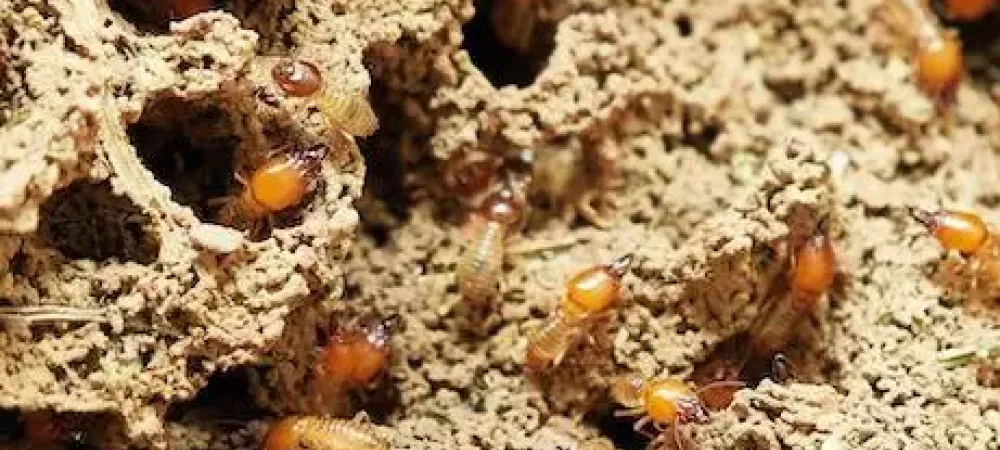How To Prevent A Termite Infestation In Morristown, NJ

Termites are a silent but persistent threat to many homes in Morristown, NJ. If left unchecked, these wood-eating pests can cause thousands of dollars of damage to your property. But with the proper knowledge and some preventative measures, you can protect your home from an infestation. Read on to learn about termites and how to prevent them from taking over your house.
What are Termites?
Termites are small insects that feed on wood, paper, and other cellulose materials. They are found in all parts of the world, but they're especially abundant in subtropical and tropical regions. There are several species of termite, but the two most common types in Morristown, NJ, are damp wood and subterranean. Dampwood termites live near sources of moisture, while subterranean termites live underground.
Termites can cause severe damage to homes if left unchecked. They can eat away at wooden structures such as walls, floors, and furniture. In addition to structural damage, they can also contaminate food sources with their feces. This can lead to health problems for people living in infested homes. It is essential to be aware of the signs of a potential infestation so you can take action as soon as possible.
Types of Termites in Morristown, NJ
Morristown, NJ, is home to two of the most common types of termites: dampwood and subterranean. Dampwood termites are attracted to areas with excess moisture and can quickly infest wood structures near water sources. Subterranean termites are found below ground, living in tunnels they create in the soil. These tunnels help them find food sources, such as wood or other materials containing cellulose. Both types of termites can cause severe damage if left unchecked.
Signs of a Termite Infestation
Signs of termite infestation can be challenging to detect, as the creatures often remain hidden inside walls or other hard-to-reach areas. However, some telltale signs can alert you to a potential problem. These signs include:
- Small piles of wood shavings and sawdust may indicate that the pests have been eating away at structural wood.
- Mud tubes along your foundation walls or window frames, which subterranean termites use to reach food sources above ground.
- Swarms of flying termites are another clear sign of an infestation; these swarms happen when winged reproductive termites emerge from their nest in search of a mate and a new nesting site.
If you see any of these signs, getting help right away is crucial—otherwise, your home could suffer serious damage due to a termite infestation.
Food Sources For Termites
Food sources for termites are plentiful and can be found inside and outside a home. Inside, cellulose-based materials such as wood, wallpaper, books, cardboard, and insulation provide plenty of sustenance for termite colonies. Outside, dead trees and shrubbery provide an ideal food source for the pests, who will happily feed on bark and leaves.
Dead Trees and Tree Stumps
Dead trees and tree stumps can provide excellent food sources for termites, as the wood is already partially decomposed and more easily broken down. Termites feed on the inner layers of dead trees and tree stumps, slowly consuming them until they are completely gone. This can be a significant problem if these dead trees or stumps are located near your home, making your home an easy target for a termite infestation.
Wooden Structures
Wooden structures can be a significant food source for termites if improperly maintained. Termites will feed on the inner layers of the wood, slowly consuming it until the structure is compromised and may even collapse. To prevent this from happening, it is crucial to inspect wooden structures regularly for signs of termite activity, such as mud tubes or tunnels, frass (termite droppings), and other signs of damage. Additionally, it is best to keep wooden structures in good repair by sealing any cracks or crevices that could provide entry points for termites.
Moist Soil and Excess Moisture
Standing water or damp soil around the foundation of a building can create an inviting environment for termites to thrive. Wet soil and excess moisture can be significant food sources for termites. To prevent them from entering, it is crucial to ensure that all gutters, downspouts, and grading are adequately maintained so that water moves away from the structure's foundation.
Termite Prevention in Morristown, NJ
Morristown, NJ, is a great place to live and call home, but it's essential to be aware of the possibility of a termite infestation. Termites can cause significant damage to homes and businesses, which can be costly if not caught in time. Prevention is the best way to keep termites away from Morristown properties.
Reduce Soil-to-Wood Contact Around your House
Reducing soil-to-wood contact around your house is important in preventing a termite infestation. The most common type of termite across the US, subterranean termites, are attracted to wood that has direct contact with soil because it provides them with the moisture and food they need to survive. To reduce this contact, ensure that lumber, mulch, paper, cardboard, or other cellulose-based materials are at least 8 inches from your home's foundation. Additionally, keep firewood at least 20 feet away from your house and avoid stacking it against walls or on the ground. It's also vital to ensure proper drainage around your home so that water moves away from the structure's foundation and does not collect near wood components.
Keep Moisture Away from your Foundation
Moisture is a key factor in termite infestations, so keeping it away from your foundation is important. Make sure that any downspouts and gutters are directed away from your home's foundation and all sprinkler heads. Additionally, ensure that storm drains empty a few feet from the foundation. Check for water leaks around your home's roofing and flashing and ensure there is proper ventilation in crawl spaces or other enclosed areas.
Remove Food Sources
Avoid leaving newspapers, cardboard boxes, and other paper products lying outside or inside your home for extended periods. Doing so can help prevent termites from finding and using these materials as food.
Seal Gaps Caused by Settling
Different materials like wood, metal, concrete, and PVC shrink or expand at different rates over time, creating cracks and gaps that create potential termite entry points. Caulk or foam sealant should be used to fill small cracks around water and gas lines. More significant gaps may require stainless steel mesh before caulking is applied. Doing so will help keep termites from entering your home and causing expensive damage. Remember to check for gaps regularly and take action immediately if any are found!
Keep Flying Termites Away During Swarming Season
As the weather warms up, flying termites may swarm in search of new colonies. To keep them from entering your home, turn off outdoor lights at night to avoid attracting swarming termites. If possible, relocate lights away from doors and windows and vents.
Get Regular Termite Inspections
Regular termite inspections are essential to protecting your home from the costly damage caused by these pests. Having a professional come in once a year to check for signs of infestation can save you thousands of dollars in repair costs. They will be able to spot any access points that termites could use and identify early signs of infestation in your home. They can also suggest preventative measures you can take, such as sealing gaps and repairing window screens, to help protect your home even further. Regular inspections will give you peace of mind knowing that your home is free from damaging termite infestations—protecting yourself now will save you money in the long run.
What are the Different Types of Termite Treatments?
Termite treatments come in various forms to prevent or eliminate an infestation. To kill termites and prevent further damage, chemical treatments involve applying insecticides to affected areas. Non-chemical treatments, on the other hand, involve physical barriers, such as steel mesh and sand, that can create a barrier between the termites and their food source. Each treatment type has its advantages and disadvantages, which should be carefully considered before making any decisions. Whatever treatment is chosen, it should always be handled with care by a professional pest control expert.
Conventional Barrier Treatments
Conventional barrier treatments are among the most common ways to prevent and treat termite infestations. They involve the application of termiticides to soil around a home or building to create a barrier between the termites and their food sources. This type of treatment is usually done by pest control professionals, requiring precision and knowledge. The active ingredients used in conventional termiticides include acetamiprid, cypermethrin, fipronil, imidacloprid, and bifenthrin. While these treatments can effectively eliminate existing infestations, they must be applied correctly and regularly maintained to be effective. It is also important to note that these treatments may not protect against new infestations, so regular inspections should still be performed.
Termite Baits
Termite baits are an effective way to prevent and treat termite infestations. Baiting systems consist of specially designed stations installed around a home or building. These stations contain an attractant intended to draw in termites, as well as slow-acting insecticides such as diflubenzuron and hexaflumuron. When the termites feed on the bait, they ingest the insecticide and die. This type of treatment is easy to install, more cost-effective and can help protect a property from new infestations. However, it's important to note that baiting systems require regular maintenance to be effective. Pest control professionals should inspect and replenish the bait stations at least every six months to ensure they remain effective against termites.
Wood Treatment
Wood treatment involves applying a termiticide directly to the wood, which helps prevent any termites from tunneling through and attacking the wood. Several types of termiticides can be used, including liquid formulations, foam treatments, and dusts. When choosing a termiticide, selecting one approved by the Environmental Protection Agency (EPA) is important, as these products are designed with both safety and effectiveness in mind. As with any pesticide application, it's important to read and follow all directions on the product label when applying a termiticide to wood. This will ensure maximum efficacy and help reduce potential risks associated with its use.
Delsea Termite & Pest Control Can Help
Delsea Termite & Pest Control can help protect your home or structure from termite infestation. Our experienced professionals are trained to identify and treat wood vulnerable to termites using the latest and most effective products. We use Sentricon Systems and Termidor to treat termites in Morristown and the surrounding areas. Our team of certified technicians can provide ongoing monitoring and inspections to ensure your home is free from any potential infestations. If you suspect your home may be infested, contact us today!
